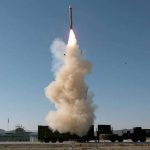Last news
 The Verkhovna Rada will review President’s bill on NABU on July 31
The Verkhovna Rada will review President’s bill on NABU on July 31
 What to Expect from All Zodiac Signs on July 27: Horoscope
What to Expect from All Zodiac Signs on July 27: Horoscope
 What to Do If You Lose Your Passport While Traveling — Step-by-Step Guide
What to Do If You Lose Your Passport While Traveling — Step-by-Step Guide
 How Keith Kellogg’s Initiative Shifted U.S. Policy Toward Ukraine
How Keith Kellogg’s Initiative Shifted U.S. Policy Toward Ukraine
 Oil Prices Surge Amid Hopes for U.S.-Japan Trade Deal Breakthrough
Oil Prices Surge Amid Hopes for U.S.-Japan Trade Deal Breakthrough
 The Verkhovna Rada will review President’s bill on NABU on July 31
The Verkhovna Rada will review President’s bill on NABU on July 31
 What to Expect from All Zodiac Signs on July 27: Horoscope
What to Expect from All Zodiac Signs on July 27: Horoscope
 What to Do If You Lose Your Passport While Traveling — Step-by-Step Guide
What to Do If You Lose Your Passport While Traveling — Step-by-Step Guide
 How Keith Kellogg’s Initiative Shifted U.S. Policy Toward Ukraine
How Keith Kellogg’s Initiative Shifted U.S. Policy Toward Ukraine
 Oil Prices Surge Amid Hopes for U.S.-Japan Trade Deal Breakthrough
Oil Prices Surge Amid Hopes for U.S.-Japan Trade Deal Breakthrough










